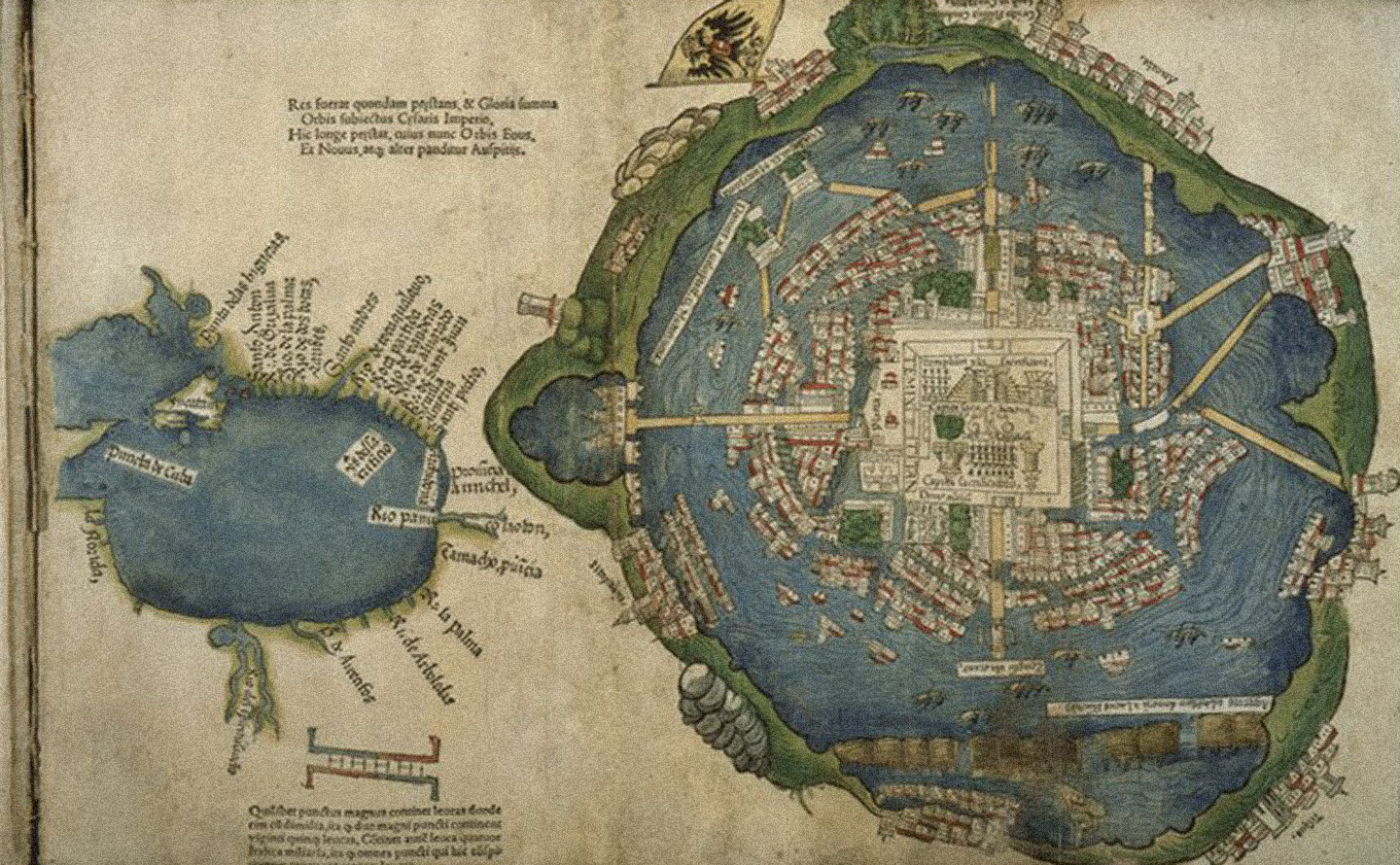Simon Lewis and Mark Maslin, “Defining the Anthropocene,” Nature 519 (2015), 171–180.
Aimé Césaire, Discourse on Colonialism (Monthly Review Press, (1972) 2000), 42.
Césaire, Discourse on Colonialism, 41.
Césaire, Discourse on Colonialism, 73.
Lewis and Maslin.
Césaire, Discourse on Colonialism, 42.
Michael Taussig, Shamanism, Colonialism, and the Wild Man: A Study in Terror and Healing (University of Chicago Press, 1986), 4.
Kathyrn Yusoff, “Epochal Aesthetics: Affectual Infrastructures of the Anthropocene,” eflux architecture, March 29, 2017, →.
See: Denise Ferreira da Silva, Toward a Global Idea of Race (University of Minnesota Press, 2007).
Fred Moten, A Poetics of the Undercommons (Sputnik and Fizzle, 2016), 12.
Richard Eden, “The Preface to the Reader” in Decades of the New World.
Alexander Weheliye, “Freenin’ Posthuman Voices in Contemporary Black Popular Music,” Social Text vol. 20, no. 2 (2002), 27.
Alexander Weheliye, “Freenin’ Posthuman Voices in Contemporary Black Popular Music,” 27.
Sylvia Wynter reminds us that the “larger issue is, then, the incorporation of all forms of human being into a single homogenized descriptive statement that is based on the figure of the West’s liberal monohumanist Man. And this conception of being, because ostensibly natural-scientific, is biocentric.” Sylvia Wynter, “Unparalleled Catastrophe for Our Species? Or, to Give Humanness a Different Future: Conversations,” in Sylvia Wynter: On Being Human as Praxis, ed. Katherine McKittrick (Duke University Press, 2015), 23. Thus this Man is restricted in its biopolitical horizon to a liberal form of subjectivity that denies the ecologies and geophysics of existence. Furthermore, as Katherine McKittrick argues: “the human is tied to epistemological histories that presently value a genre of the human that reifies Western bourgeois tenets; the human is therefore wrought with physiological and narrative matters that systematically excise the world’s most marginalized.” Quoted in Wynter, “Unparalleled Catastrophe for Our Species?,” 9.
Denise Ferreira da Silva, “Before Man: Sylvia Wynter’s Rewriting of the Modern Episteme,” in Sylvia Wynter: On Being Human as Praxis, 93.
Sylvia Wynter, “Black Metamorphosis: New Natives in a New World,” Institute of the Black World Records, MG 502, Box 1, Schomburg Center for Research in Black Culture, 46–47.
Sylvia Wynter, “Black Metamorphosis, 47.
Sylvia Wynter, “Black Metamorphosis, 53.
Aimé Césaire, Return to My Native Land (Archipelago Books, (1956) 1969), 28.
Wynter, “Black Metamorphosis,” 71.
Wynter, “Black Metamorphosis,” 79.
Wynter, “Black Metamorphosis,” 81–83.
Wynter’s claim on indigenization and learning new forms of planting subjectivity in the earth is a means to claim back a stolen subjective-geographic relation and should not be confused with a claim of indigeneity. Within the context of settler colonialism, indigeneity rightly makes specific material claims about sovereignty and territory that are different from the claims that Wynter is making for black slaves. I believe Wynter is arguing for us to notice the creation of new material grammar outside of plantation geologics that humanize inhuman conditions through a relation to the earth that is planetary, not territorial.
Wynter, “Black Metamorphosis, 7.
Wynter, “Black Metamorphosis,” 17.
Price-Mars quoted in Wynter, “Black Metamorphosis.”
Wynter, “Black Metamorphosis,” 17.
Price-Mars quoted in Wynter, “Black Metamorphosis,” 18.
Aimé Césaire, Return to My Native Land, 29.
Wynter, “Black Metamorphosis.
Wynter, “Black Metamorphosis.
Wynter, “Black Metamorphosis, 32–33.
Wynter, “Black Metamorphosis, 139.
See: Carole B. Davies, “From Masquerade to Maskarade: Caribbean Cultural Resistance and Rehumanizing Project,” in Sylvia Wynter: On Being Human as Praxis.
Paul Crutzen, “Geology of Mankind—the Anthropocene,” Nature 415 (2002), 23.
Elizabeth Povinelli, Geonotologies: A Requiem to Late Liberalism (Duke University Press, 2016). See also: Kathyrn Yusoff, “The Anthropocene and Geographies of Geopower,” in Geographies of Power eds. M. Coleman and J. Agnew (Edward Elgar, 2018).
Wynter, “Black Metamorphosis, 106.
C. L. R. James, Black Jacobins: Toussaint L’Ouverture and the San Domingo Revolution (Random House, (1938) 1989).
Wynter, “Black Metamorphosis, 45–46 (emphasis in original).
Denise Ferreira da Silva, “Toward a Black Feminist Poethics,” The Black Scholar vol. 44, no. 2 (2014), 2.
Karl Marx, Capital Vol. 1 (1867) (Progress, 1961, 760).
Douglas Blackman, Slavery by Another Name (Anchor Books, 2008).
Marx, Capital, 759–60.
Jan Zalasiewicz, Colin N. Waters, Mark Williams, et al., “When Did the Anthropocene Begin? A Mid-Twentieth Century Boundary Level is Stratigraphically Optimal,” Quaternary International vol. 383, no. 5 (2015), 196– 203.
Colin N. Waters, Jan Zalasiewicz, Colin Summerhayes, Anthony D. Barnosky, Clément Poirier, Agnieszka Gałuszka, Alejandro Cearreta, et al., “The Anthropocene Is Functionally and Stratigraphically Distinct from the Holocene,” Science vol. 351, no. 6269 (2016), →.
Elizabeth DeLoughrey, “The Myth of Isolates: Ecosystem Ecologies in the Nuclear Pacific, Cultural Geographies 20 (2013), 179.
“A Time-Lapse Map of Every Nuclear Explosion Since 1945 - by Isao Hashimoto,” YouTube, →.
“Project 4.1 Biomedical Studies: Studies of Response of Human Beings Exposed to Significant Beta and Gamma Radiation due to Fall-Out from High Yield Weapons”: “The purposes of (Project 4.1) were to (1) evaluate the severity of radiation injury to the human beings exposed, (2) provide for all necessary medical care, and (3) conduct a scientific study of radiation injuries to human beings.” Edwin J. Martin, and Richard H. Rowland, Castle Series, 1951, Defense Nuclear Agency Report DNA 6035F, April 1, 1982, →.
The use and return of the suits indicate a certain performative quality in the US military’s subjection of the Marshallese citizens, not unlike the rented clothing that slave dealers used on the slave blocks.
Hortense J. Spillers, Black, White and in Colour. (University of Chicago Press, 2003), 208.
Quoted in Elizabeth DeLoughrey, “The Myth of Isolates,” 171.
Spillers, Black, White and in Colour, 207.
Elizabeth DeLoughrey, “The Myth of Isolates,” 172.
The subtests involving plutonium, uranium, and beryllium and were code-named “Kittens,” “Rats,” and “Vixen,” which ironically are representative of the feral ecologies that accompanied settlers and had such a devastating effect on the unique flora and fauna of Australia.
This text is an excerpt from A Billion Black Anthropocenes or None by Kathryn Yusoff, published in Novemeber 2018 by University of Minnesota Press.
